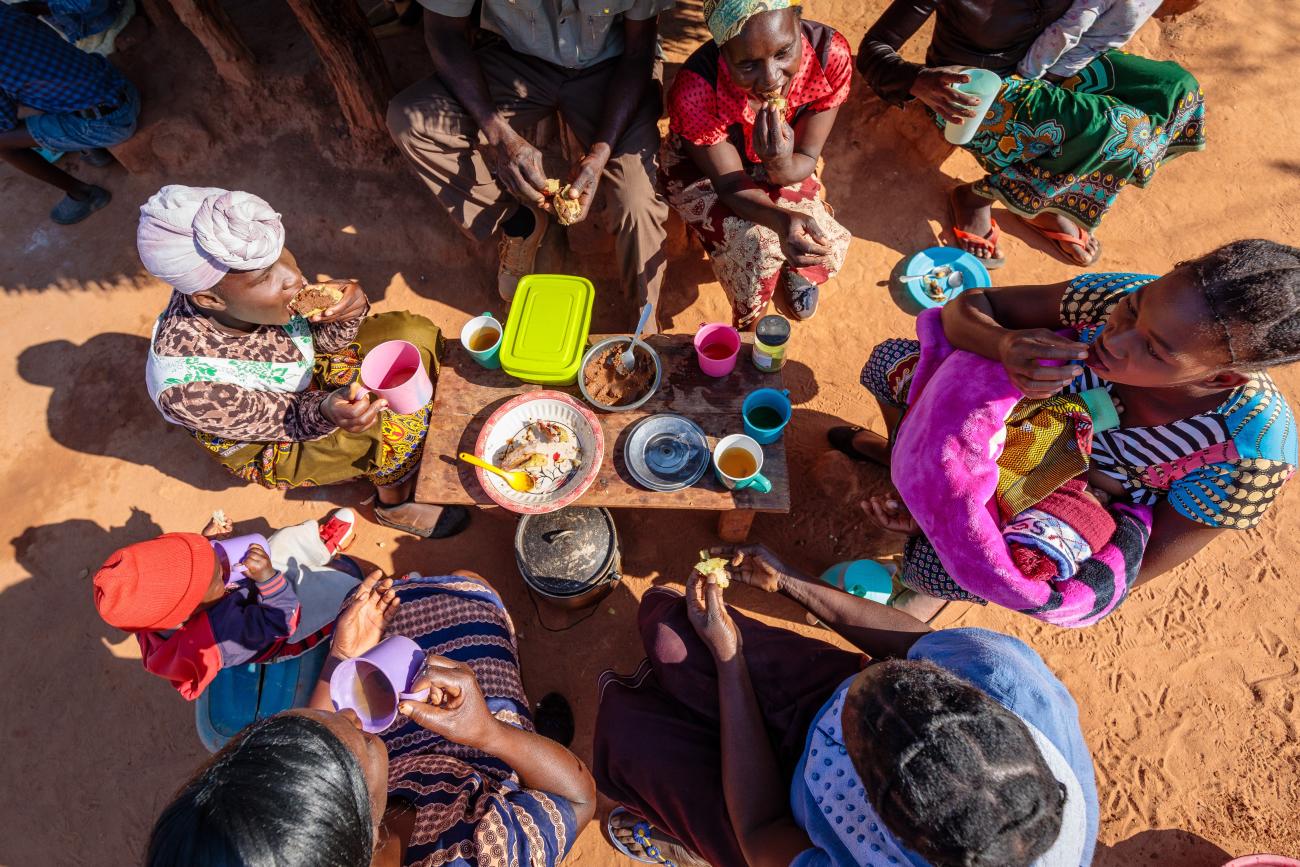Climate smarts: ‘How growing food for my family turned into a business’

World Food Programme training is empowering farmers in Zambia to increase their yields of crops that can withstand shocks
Mainner, her husband and their four children live in the town of Pemba, where she’s managed to extend growing to get by into a successful business, supplying vast amounts of nutritious crops for food producers — in spite of the ever-present risk of drought and floods destroying all.
“I used to struggle to feed my family or dress my children, but I changed my life for the better when I diversified my farm and started selling in bulk,” says Mainer, who like thousands of farmers in Zambia’s Southern Province, is supported by the World Food Programme (WFP).
“This year, I’m hoping to aggregate 700 metric tons of cowpeas, maize, soya beans and groundnuts,” she adds.
Despite success stories such as hers, the fact that 35 percent of children aged under 5 suffer stunting and 12 percent are underweight suggests that food systems — the production, distribution and consumption of foods — are not robust enough to meet the needs of large sections of society.
Zambia’s smallholder farmers produce 90 percent of the country’s supply of food, but they are highly dependent on rainfall. Even a slight change in temperature or water levels can affect crops like maize. The resulting slowdown in food prices sends prices rocketing.
In a country where annual food inflation is at a five-year high, a decrease in output can have devastating consequences and not just for the farmers. People in urban areas in particular, who are already struggling to put food on the table, will, with a depreciating currency, be priced out of the market — in 2020, the prices of goods and services increased by 22.2 percent.
On the other hand, a plentiful harvest can also have its downfalls. Inadequate capacity to store, market and transport food surpluses causes farmers’ incomes and food quality to drop. For farmers without adequate storage facilities, up to 40 percent of food is wasted or spoiled.
The consumption of nutritious food — especially among smallholder farming families — is limited by over-reliance on maize production coupled with their geographical isolation.
Making a living
In 2017, Mainner started working with WFP to boost and diversify her yield. Before that, she only grew maize — a crop that is highly susceptible to drought and flooding.
So-called climate-smart practices meant she’d no longer loosen the soil before planting, which leads to its progressive degradation and a loss of nutrients.
Training in conservation agriculture changed her prospects. She began to use organic fertilizer and a technique of minimal soil disturbance to grow a variety of drought-tolerant crops. “This improved my yields, income from selling and nutrition for my family,” she says.
Mainner is also empowered by access to climate information — WFP has installed 165 rain gauges in the area. Farmers are trained to measure, record and disseminate rainfall data, which helps them to make the right decision on what crops to plant and when.
“If I’m told that there won’t be much rain in a season, I go for short-maturing varieties,” she says. “I share all this information with my fellow farmers. If they are affected by climate shocks, I am too. I lose business if I can't aggregate their crops.”
Mainner decided to start bulking and selling aggregated crops through WFP’s Virtual Farmers Market mobile app, which connects farmers with potential buyers, helping them get more competitive prices. She also sells to larger buyers from Pemba town.
“I started using some of my savings and income to buy and bulk crops. Over the past two years, I’ve managed to sell over 500 metric tons of cowpeas, soybeans, orange maize, white maize and groundnuts,” she says.
“Before a season starts, I ask buyers about their demand for the year. I share this information with the farmers I buy from, so that we can meet their demands,” she adds.
Mainner hires a tractor to help collect produce from hard-to-reach areas. She stores all her aggregated crops in airtight bags — a low-cost, post-harvest tech that eliminates the risk of pests by suffocating any insects and preventing others from entering. This helps to reduce food losses and allows Mainner to sell her produce when market prices are higher.
“The shed and airtight bags have really helped me. Before, I stored crops in my house and could only aggregate small amounts,” she says. “Now, I buy from almost 400 farmers. My dream is to start selling fertilizer and seeds in this shed as well. It will help farmers access what they need without having to travel long distances into town.”
To improve healthy diets, Mainner advocates for farmers to start growing nutritious crops and processing healthy food.
“I’ve started to make a range of food products out of cowpeas, soybeans, orange maize and groundnuts to feed my family. My children’s favourite is groundnut peanut butter. We eat it with sweet potato,” she says.
“We no longer have a problem with nutrition. We make our own food and can afford to buy what we do not grow,” she says.
See Mainner's story on YouTube: https://youtu.be/v7aKMm4dGWU



